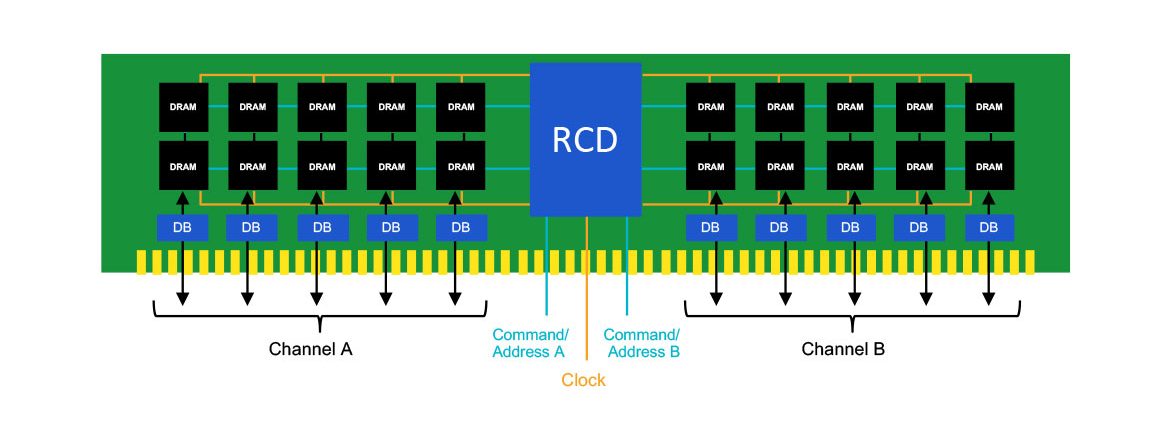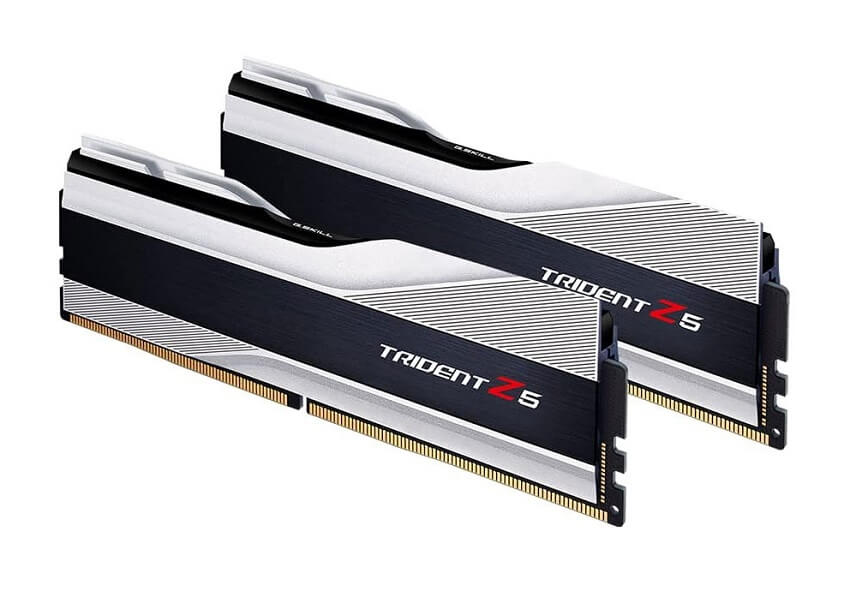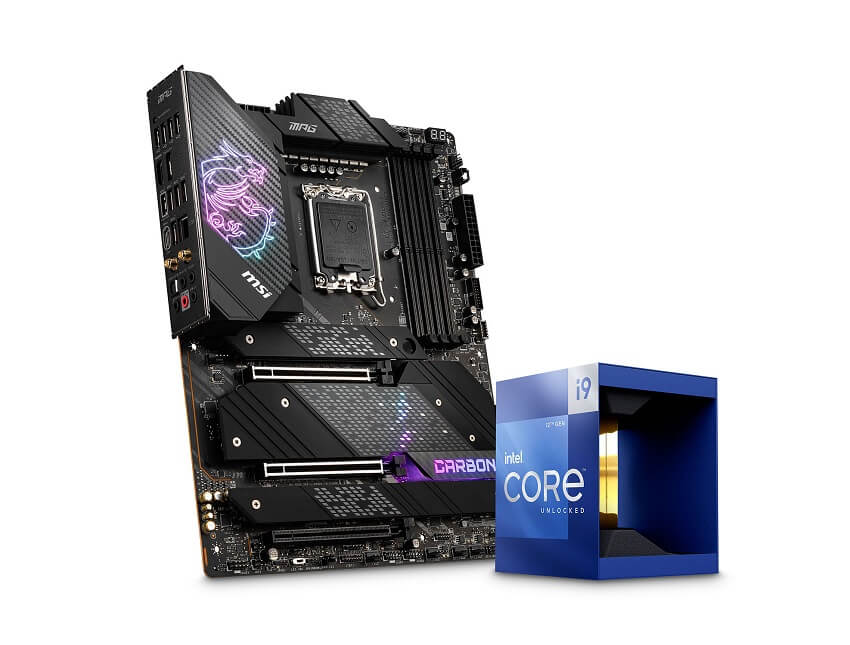One of the biggest technological shifts in the PC space in recent years has been the introduction of DDR5 memory.
It’s still an ongoing transition, but what began with the launch of Intel’s 12th generation Alder Lake CPUs in 2021 is set to become a much bigger transitory moment in 2022 with the launch of both Intel’s 13th generation Raptor Lake and AMD’s Ryzen 7000 Zen 4 CPUs.
Although Intel will continue to offer DDR4 support on some motherboards, both platforms will push DDR5 memory heavily. Both will take advantage of the additional bandwidth the generational leap offers, but could suffer from the added cost that upgrade places on potential buyers.
DDR5 memory, like memory generations of the past, offers a big improvement to potential memory bandwidth, and useful reduction in power draw. But, it loses that all-important compatibility and it’s notably more expensive than the older DDR4 standard.
Should you buy DDR5 memory for your next PC if you have the option? Is it worth upgrading for on its own? Can you get away with DDR4?
We’ll answer all these questions and more as we dig into the real differences between DDR4 and DDR5.
DDR4 vs. DDR5: What’s the difference?
 Image source: Samsung
Image source: SamsungDDR4 and DDR5 are both types of system memory that you can equip your PC with. They both offer high-speed, limited capacity fast access storage to feed the CPU and graphics card all the information they need without the delay that would come with loading data directly from even fast storage drives like SSDs.
Both DDR4 and DDR5 come in a range of speeds and capacities, but while they might look roughly the same from the outside, the speeds and capacities they’re available in are different, but they aren’t interchangeable. While some processors can support one or the other, motherboards only support one type. So be sure when buying your system that you make your decision on memory type before picking a motherboard, as it will factor into your decision.
DDR4
DDR4 memory is available in kits from 4GB to 256GB, depending on the number of RAM sticks and the capacity of each stick. Typical PCs will have between 8GB and 32GB, with most gaming PCs running two sticks of 8GB DDR4. However some will have two sticks of 16GB DDR4.
Official stock speeds for DDR4 start at 1,600 Megatransfers per second (MTps) and finish at 3,200 MTps. That’s just based on JEDEC specifications, however. Memory manufacturers have for years offered various other speeds that raise the bar for memory performance much higher by using extreme memory profiles (XMP) to essentially factory overclock the modules. Those can extend well beyond the 3,200 MTps limit, with the most extreme kits available at around 5,200 MTps. Although those are rare and expensive.
DDR4 memory typically offers tighter timings than DDR5, resulting in better overall latency at comparable speeds, though it can’t reach the same high frequencies as the newer standard.
DDR5
In comparison, DDR5 memory has an official speed range between 4,800 MTps and 7,200 MTps. This range isn’t as well explored or represented as DDR4 just yet, as DDR5 is still a relatively new technology and doesn’t have particularly strong adoption.
However, we’re already seeing manufacturers push up against its limits, with examples of 7,000MTps+ kits. So it’s likely that we’ll see them push well beyond that in the years to come, just as DDR4 eventually operated at much faster speeds than it was originally designed for.
To accommodate the additional bandwidth offered by DDR5, timings have been loosened. So at the same speeds, DDR5 memory has higher latency and should perform slightly worse. But that’s more than made up for with the much greater potential it has for higher bandwidth.
In terms of capacity, DDR5 effectively doubles what’s possible over DDR4. There are already examples of 512GB memory kits, while individual sticks start at 8GB. As with DDR4, most early DDR5 adopters are running between 16GB and 32GB. While there is the potential for DDR5 owners to have much greater capacities, in 2022 there isn’t much need beyond 32GB for gaming. And with DDR5 prices being higher than DDR4 in general still, there’s an active disincentive to expand beyond what’s strictly necessary.
Channel Architecture

A big change with DDR5 over DDR4, was an alteration to the way its channels work – not to be confused with dual-channel mode.
Within the modules themselves, channels are what the memory controller uses to communicate directly with the processor, and where DDR4 memory has a single command/address bus with 64 data lines, DDR5 has two 32 command/address buses offering 32 data lines each. This allows for two simultaneous lines of communication with the processor and helps raise overall performance, especially in tasks like gaming.
Power and efficiency
 Image source: Samsung
Image source: SamsungAs with previous generations of memory, DDR5 is more efficient than its predecessor. Where DDR4 memory typically requires 1.2v to function normally, DDR5 can do so with just 1.1v. That means they draw less power, making them a great addition to mobile PCs where every bit of power-saving counts towards better battery life.
While that isn’t so impactful on desktop PCs, it should also help keep temperatures down, and as we’ve seen with early DDR5 kits, despite the added performance, they don’t typically need any greater cooling capacity than their DDR4 predecessors.
That’s especially notable when you consider that DDR5 kits also feature the voltage controller module on the memory sticks themselves, rather than on the motherboard. This improves power efficiency further, and allows for greater scalability on platforms where larger capacity memory kits are necessary.
Real World Performance – Gaming

As much as DDR5 memory looks more impressive than DDR4 memory on paper, that’s only important if it actually results in improved performance in the real world. Fortunately, with Intel’s Alder Lake processors making it possible to run those CPUs with both DDR4 and DDR5, it’s relatively easy to test memory sticks against each other.
In terms of gaming, it very much depends on the games you play.
While some games, like Far Cry 6 have shown as much as a 20 percent frame rate improvement when jumping from a high-speed 3,600 MTps kit of DDR4 memory, to a much faster 6,000 MTps kit of DDR5 memory, other games don’t show quite such leaps.
There’s around 10 percent performance improvements to be found in World War Z, War Thunder, Fortnite, and PlayerUnknowns Battlegrounds, but you’ll also find comparable drops in performance in games like The Division 2, Valorant, and Death Stranding.
The majority of games do show some improvement with DDR5 memory, though it’s typically closer to five percent which is going to be hard to spot no matter what your frame rate is.
That’s not to say that DDR5 memory isn’t worth it, as if you want to run a gaming PC with every setting flat out and you’ve already budgeted for a high-performance processor and graphics card, you might as well stump up for a DDR5 kit too. But, there are probably better places to focus your budget if it’s a toss-up between DDR5 and having a couple hundred extra pounds to spend on a different part of your PC.
Real World Performance – Productivity
Sometimes the big leaps in technological capability tend to affect work more than play, so what about productivity applications like video and photo editing suites? Video transcoding and CAD work?
Puget Systems and PCMag did some comprehensive testing of this earlier this year and found that while DDR5 memory does play a small part in improving overall system performance, it wasn’t a dramatic leap. The average performance difference between a 3,200 MTps kit of DDR4 memory and a 4,800 MTps kit of DDR5 memory was typically around five percent, which as with gaming, isn’t going to be particularly noticeable.
What that does suggest, though, is that higher-speed DDR5 kits that become available in the future, may be able to have a greater impact on memory, and ultimately system performance. But at this time, DDR5 memory doesn’t make a game-changing difference to any workloads.
Best memory kits you can buy

If you’re a gamer, the most important consideration when picking your memory is making sure it covers your capacity needs – typically 8-16GB for most games – and is at least 3,000 MTps. However, if you want to maximize your performance, you can get greater FPS with higher-end kits. And as we saw with the real-world productivity benchmarks, if you’re working with DDR5 memory, the higher the frequency the better.
If you’re building or buying an Intel Alder Lake PC, a DDR5 kit like the G.Skill Trident Z5 RGB DDR5-6000 will give you fantastic performance with some tasteful RGB lighting. Timings are pretty tight for DDR5 and though the price tag is high, you’ll get some very impressive performance numbers if you pair it with a powerful CPU.
As for DDR4, Chillblast sells a number of gaming PCs with the excellent G.Skill Trident Z 3,200 MTps kits in a range of capacities, and they offer fantastic gaming performance with a very attractive heatspreader and lighting design. You’ll get slightly greater performance from something like the Patriot Viper Steel DDR4-4400, but you’ll need to be a dab hand at tweaking your CPU settings to make the most of it (especially on AMD systems).
What Do You Need For DDR5?
 Image source: Scan
Image source: ScanThe first platform to support DDR5 memory was Intel’s 12th-generation Alder Lake processors and 600-series motherboards in November 2021. That was followed by AMD’s Ryzen 6000 mobile processors in early 2022. At the time of writing, those platforms are the only two that currently support DDR5 memory, so if you want to run a PC with DDR5, you’ll need an Intel Alder Lake CPU or an AMD Ryzen 6000-powered laptop.
That’s going to change in short order, though. Both AMD and Intel’s next-generation processor lineups are designed to work well with DDR5. AMD’s Ryzen 7000 Zen 4 CPUs will be DDR5 exclusives, and though there are rumours of possible socket AM4/DDR4 integration with some select CPUs, that hasn’t been announced.
Intel’s upcoming 13th-generation Raptor Lake processors, however, will offer both DDR5 and DDR4 support right out of the gate; though you will need to use specific motherboards for the DDR4 support. Most motherboards will support DDR5 by default. This is likely to be the last Intel generation that supports the older memory standard.
Both of these new lines of processors and their accompanying motherboards are slated to launch in Q3 2022, with likely a greater range of options launching in the months that follow. While the results of using DDR5 in a current-generation PC aren’t overly impressive, it’s likely that future generations will show much greater benefit from the newer memory standard, making it much more worthwhile upgrading to and for.
Should You Upgrade?
As it stands, DDR5 memory isn’t a revolutionary change when it comes to RAM speed. It offers middling performance improvements in gaming and productivity when compared with comparably priced DDR4 memory, and even if you compare it to much slower sticks, the difference is rarely dramatic.
It can make quite a difference in some games, though, so if you are planning to play those most affected titles, you may find upgrading worth it. You’ll likely see greater FPS enhancement from a CPU or GPU upgrade, though. With all that being said, if you’re upgrading to an Alder Lake PC and want to maximize your performance, DDR5 will let you do it, but it’s certainly not worth upgrading your entire PC for on its own.
In the future, you may not have much choice, though. As Raptor Lake and Zen 4 are poised to make DDR5 memory more accessible and more necessary than ever, we’re likely only a generation or two away from DDR5 being the only memory type supported by new hardware. When that happens, you might be grateful you already have a PC with DDR5 memory, as it’ll make that upgrade path a little cleaner and more affordable in the future.





